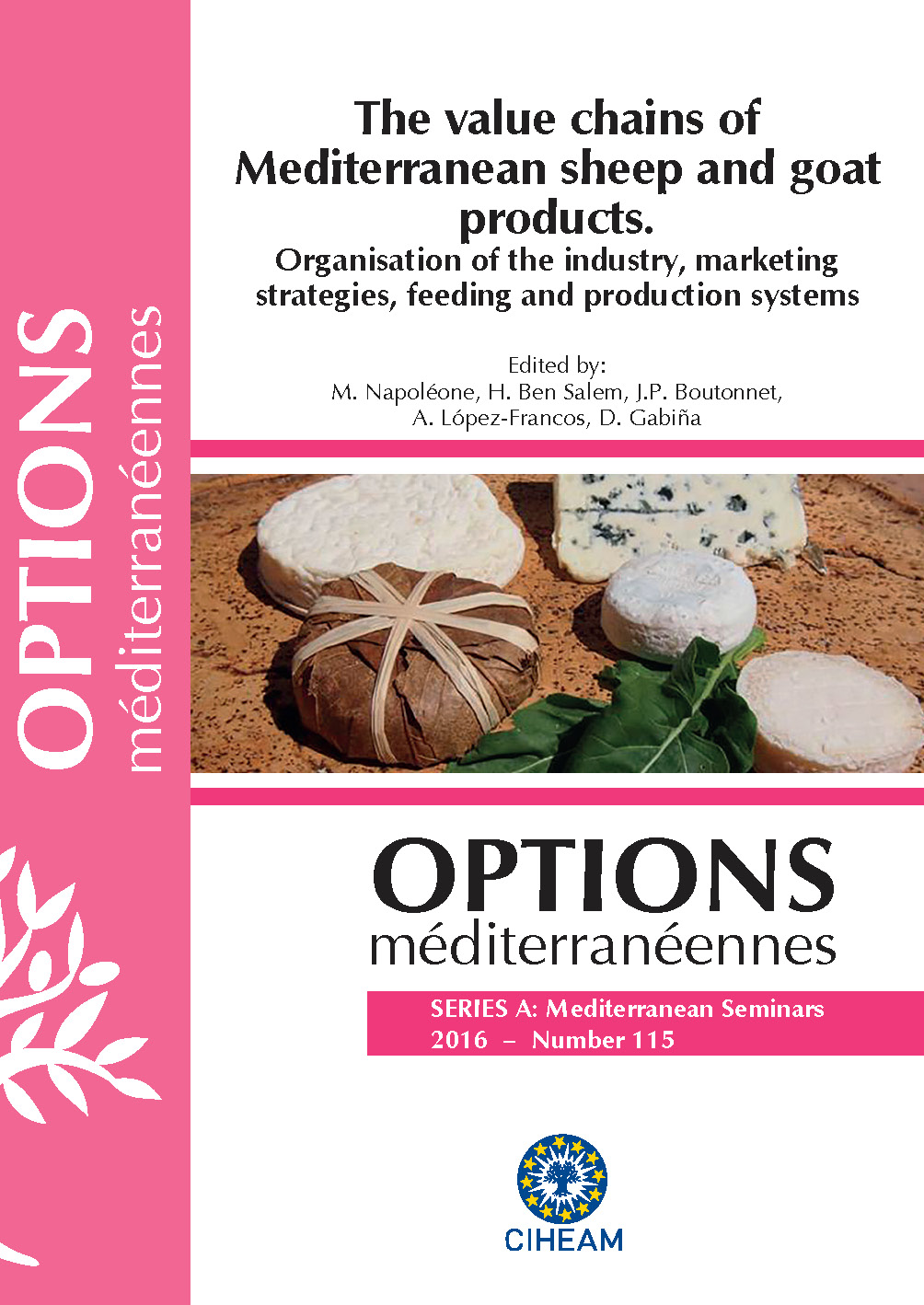| Article précédent | p. 591-595 | Article suivant |
Short-term impacts of goat stocking rate on arthropod fauna in upland improved pastures
The reduction in grazing intensity is usually recommended to meet biodiversity goals, frequently at the expense of productive objectives. This statement is mostly based on vegetation data, whereas local fauna responses are unclear, especially under goat grazing. The study aimed at comparing the ground-dwelling arthropod communities of upland improved pastures managed with three different goat stocking rates (10, 15 and 20 goats/ha). Two replicates per treatment were established in six plots at a northern Spanish mountain area. Fauna was collected with pitfall traps (10 per paddock) operating continuously from May to August 2010. A total of 20,672 arthropods from 5 classes, 15 orders and 67 families were collected. Coleoptera (46% of all catches), Aranei (29%) and Hymenoptera (15%) dominated, and within each, the families Staphylinidae (55% of all Coleoptera), Linyphiidae (76%) and Formicidae (99%) stood out. The total abundance and family richness varied among periods (P<0.01), the highest records occurring in June, but not between treatments. Although most families were indifferent to the treatments, some responses occurred. Ground beetles (Carabidae) were more abundant at the lowest stocking rate (P<0.01), whereas Lathridiidae were at the highest one (P = 0.06). Community composition was similar between treatments but it changed through time. The reduction in goat grazing intensity promoted subtle responses of the arthropod fauna after the first experimental year, which should be confirmed with further research at a longer term.
La réduction de l’intensité du pâturage est habituellement recommandé pour atteindre les objectifs de la biodiversité, souvent au détriment des objectifs de production. L’étude a comparé les communautés d’arthropodes fouisseurs dans les pâturages améliorés gérés avec trois taux de chèvre de stockage (10, 15 et 20 chèvres/ha). Deux répétitions par traitement dans six parcelles ont été réglées dans un zone montagneuse du nord de l’Espagne. Faune a été recueilli avec des pièges à fosse (10 par parcelle) fonctionnant en continu de Mai à Octobre 2010. Un total de 20 672 arthropodes de 5 classes, 15 ordres et 67 familles ont été recueillis. Coleoptera (46% des captures), Aranei (29%) et Hymenoptera (15%) a dominé, et au sein de chacune, les familles Staphylinidae (55% de l’ensemble Coleoptera), Linyphiidae (76%) et formicidés (99%) se démarquent. L’abondance et la richesse familiale totale variait périodes (P<0,01), tous les records survenant en Juin, mais pas entre les traitements. Un groupe réduit de familles varié entre les traitements. Carabidae étaient plus abondants au taux de chargement plus bas (P<0,01), alors que Lathridiidae étaient au plus haut d’un (P = 0,06). Composition de la communauté était similaire entre les traitements, mais il a changé à travers le temps. Étaient faune réponses subtiles à l’intensification après un an. Des études à long terme sont nécessaires pour clarifier ces résultats.
- [ Afficher ]
- [ Télécharger ]
- [ Exporter la citation ]
Vous pouvez télécharger la citation au format :
- [ Imprimer ]
-
Mots-clés
BIODIVERSITECiter cet article
Rosa García R., Celaya R., García U., Osoro K. Short-term impacts of goat stocking rate on arthropod fauna in upland improved pastures. In : Napoléone M. (ed.), Ben Salem H. (ed.), Boutonnet J.P. (ed.), López-Francos A. (ed.), Gabiña D. (ed.). The value chains of Mediterranean sheep and goat products. Organisation of the industry, marketing strategies, feeding and production systems. Zaragoza : CIHEAM, 2016. p. 591-595. (Options Méditerranéennes : Série A. Séminaires Méditerranéens; n. 115). Joint Seminar of the Subnetworks on Nutrition and on Production Systems of the FAO-CIHEAM Network for Research and Development in Sheep and Goats, 2015/06/16-18, Montpellier (France) . http://om.ciheam.org/om/pdf/a115/00007338.pdf



